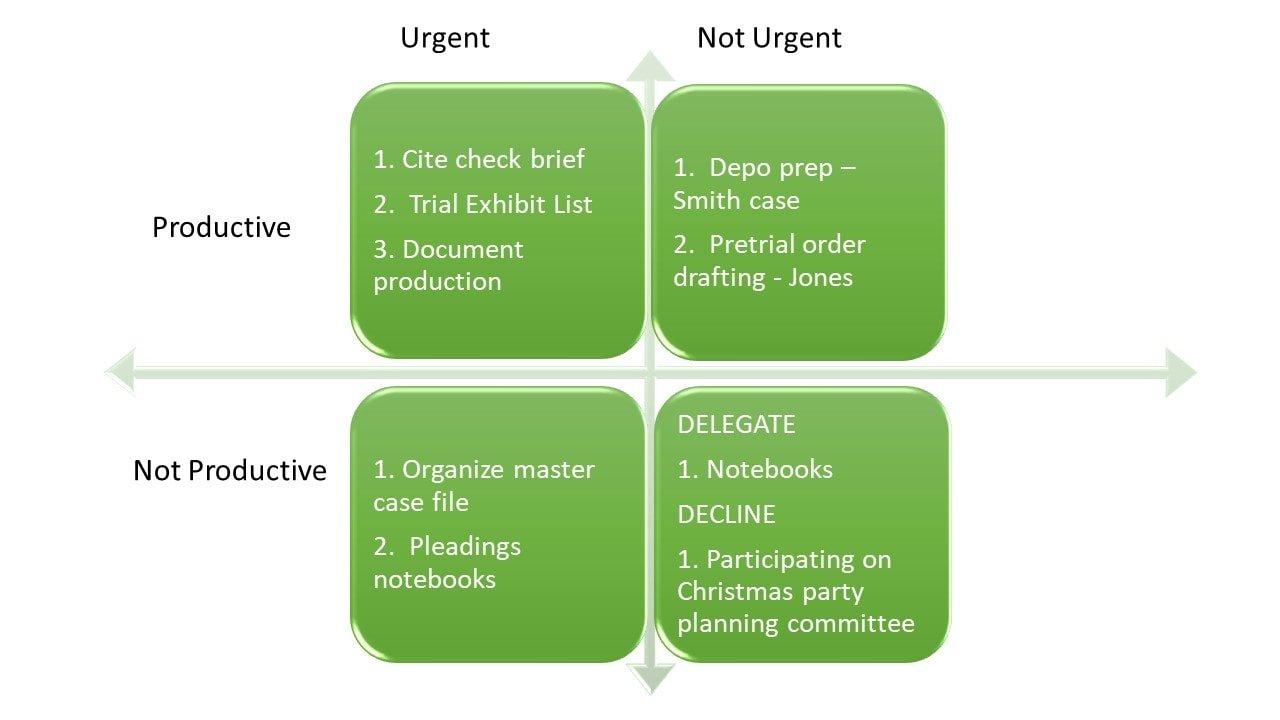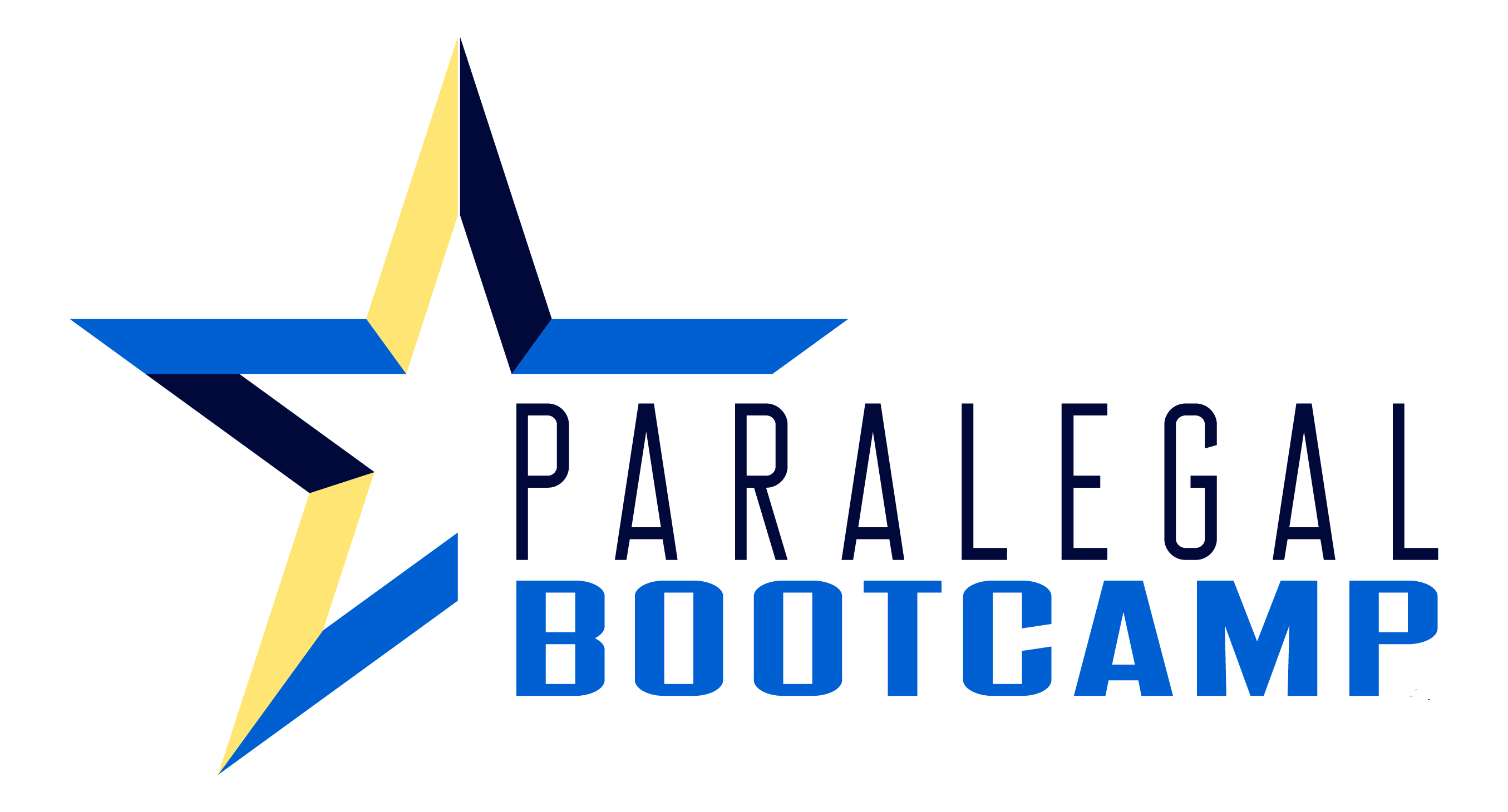3 Pro Tips for Paralegal Time Management
There are never enough hours in the day. That rings especially true if you are a paralegal working under the strict deadlines that are typical in the legal profession.
Unlike other professionals, paralegals who are running tight on time can’t just say, “We’ll get that to you tomorrow instead of today.”
The deadlines that paralegals have usually come from a court order, rules or regulations. Or it’s a commercial transaction or a real estate transaction that is closing on a certain date. Paralegals don’t have the option of not meeting the deadline.
Here are 3 tips to help you get the most out of your day. You can read the article below or watch the video.
Watch this paralegal training tip below!
Tip 1: Stop Multi-Tasking
When you are multitasking, you are not doing two things at the same time. Instead, what you’re doing is rapidly going back and forth between tasks. That is called task-switching. It is this switching process that is mentally taxing. Your brain must recall instructions each time you go back to that task. Then the brain puts it aside as it retrieves instructions for another task and repeats the process. The more complex the task, the more time it takes to switch between tasks.
Multitasking could reduce your paralegal productivity by as much as 40%.
Imagine if you could get just half of that back just by using this one paralegal time management tip. That could be a 20% improvement! 🎉
Tip 2: Replace Your Projects List with a Task List
Most “To-Do” Lists look more like a project list. A project is something that has more than one task that has to be completed in order to check it as completed. For example:
TO-DO LIST FOR TOMORROW
-
- Smith case
- Depo prep Axelrod case
- Trial Exhibit List – Dorsey
Instead, think of those things like projects that require more than one action to complete. With that mindset, you know that you’re never going to be able to check those items off your list until the entire project is done. Instead, break up that “project list” into all of the discrete tasks that it will take to complete the project. For example:
Smith Case
-
- Call Smith client re: draft interrogatory responses
- Review client documents to get other answers to interrogatory questions
Alexrod Case
-
- Review production files for Sam’s depo in Alexrod Case
- Review other depo transcripts for mention of Sam in others’ testimony
Dorsey Case
-
- Run the report in Summation for key docs to include in the trial exhibit list
- Run depo exhibit report for the first-round draft of the trial exhibit list
This will allow you to check more items off your to-do list and know when the project is closer to being completed. It also makes it mentally rewarding to see more of those checkmarks at the end of each day.
👉 PRO TIP: When you break your big projects into discrete tasks, it’s also easier to draft those billable time entries! If you want some more tips on doing that, you can get 4 Tips on Drafting Better Time Entries.
Billable Hour Boot Camp
Live webinar series starts on September 23, 2025!
The billable hour course and coaching program to help law firm timekeepers:
✅ Exceed their annual billable targets
✅ Reduce their stress related to billable hours
✅ Write better time entries and reduce write-offs
✅ Get more work done in less time so that they have a better work/life balance
For the only time this year, we’re going live for a 5-part webinar series.
Join Ann Pearson as she gives you practical strategies, real-time coaching, and results-driven insights that you can apply immediately.
SEATS ARE LIMITED! Get yours before the doors close.

Tip #3: Prioritize Your Workday – Every Day
During the workday, we encounter many distractions, some of which come from our electronic devices. However, we can also be distracted if we are not able to focus on what we have to get done today.
Here are two methods you can use to prioritize your workday and create a written plan for what you want to accomplish today.
1. The Visual Grid
With the visual grid, take a sheet of paper from your legal pad and divide it into 4 quadrants. Then decide which 3 tasks are urgent and important.
Put those 3 tasks in the upper left quadrant. The remaining important tasks go into the upper right quadrant. (Watch the video above for more detail on this method).
When you start your workday, start in the upper left quadrant (do now), and don’t do any other tasks on the paper until you finish all of the tasks that are in this quadrant.

2. The Ivy Lee Method
With this method, instead of drawing a grid on a sheet of paper, you take your items from your to-do list and use them to prioritize how you will spend your workday.
At the end of each workday, write down the 6 most important billable things you need to accomplish tomorrow. No more than 6. Prioritize those 6 items in order of their importance.
When you arrive tomorrow, concentrate only on the first task. Work on it until it’s finished. Approach the rest of the list the same way. At the end of the workday, move any unfinished items to your new list for the next day. Repeat this process every working day. If you have these 6 things on your list for tomorrow, you would start working on #1 and don’t move on to other tasks or distractions, until you can check #1 off your list. Then move to #2.
-
- Call Smith client re: draft interrogatory responses
- Review client documents to get other answers to interrogatory questions
- Review production files for Sam’s depo in Alexrod Case
- Review other depo transcripts for mention of Sam in other’s testimony
- Run the report in Summation for key docs to include in the trial exhibit list
- Run depo exhibit report for the first-round draft of the trial exhibit list
If you only finish the first 3 things on the list today, numbers 4, 5, and 6 go on tomorrow’s list and you add 3 more. The order of importance might change depending on what the urgency is for all of them compared to the 3 new items you would add to the list. This method doesn’t mean that you only have to do 6 things each day.
If you are lucky enough to be able to check off all 6 items on today’s list and you still have more time available to you, then you would start your next list of 6. The idea behind keeping the list at 6 is to make it more manageable. It’s just too overwhelming to show up at work and look at a to-do list that has 30 tasks listed on it.
If you are a paralegal with a billable hour requirement, you don’t want to miss our Billable Hour Boot Camp. In just 3 hours, you’ll no longer stress about meeting that annual billable hour quota.
I hope these paralegal time management tips lead you into your best year ever! For more paralegal tips, visit our Paralegal Blog.

A Paralegal Resource For You
Meet the Author

Ann Pearson is the Founder of the Paralegal Boot Camp, and host of the Paralegals on Fire! Podcast Show, and passionate about promoting the paralegal profession.
Ann spent 20 years working as a paralegal manager and a litigation paralegal before opening the Paralegal Boot Camp in 2010.
Ann’s training programs focus on adding immediate value to a paralegal’s career and bridging the gap between what a paralegal learns in school and what they actually do on the job.
Visit the About Us Page to learn more about why Ann started the Paralegal Boot Camp.

























